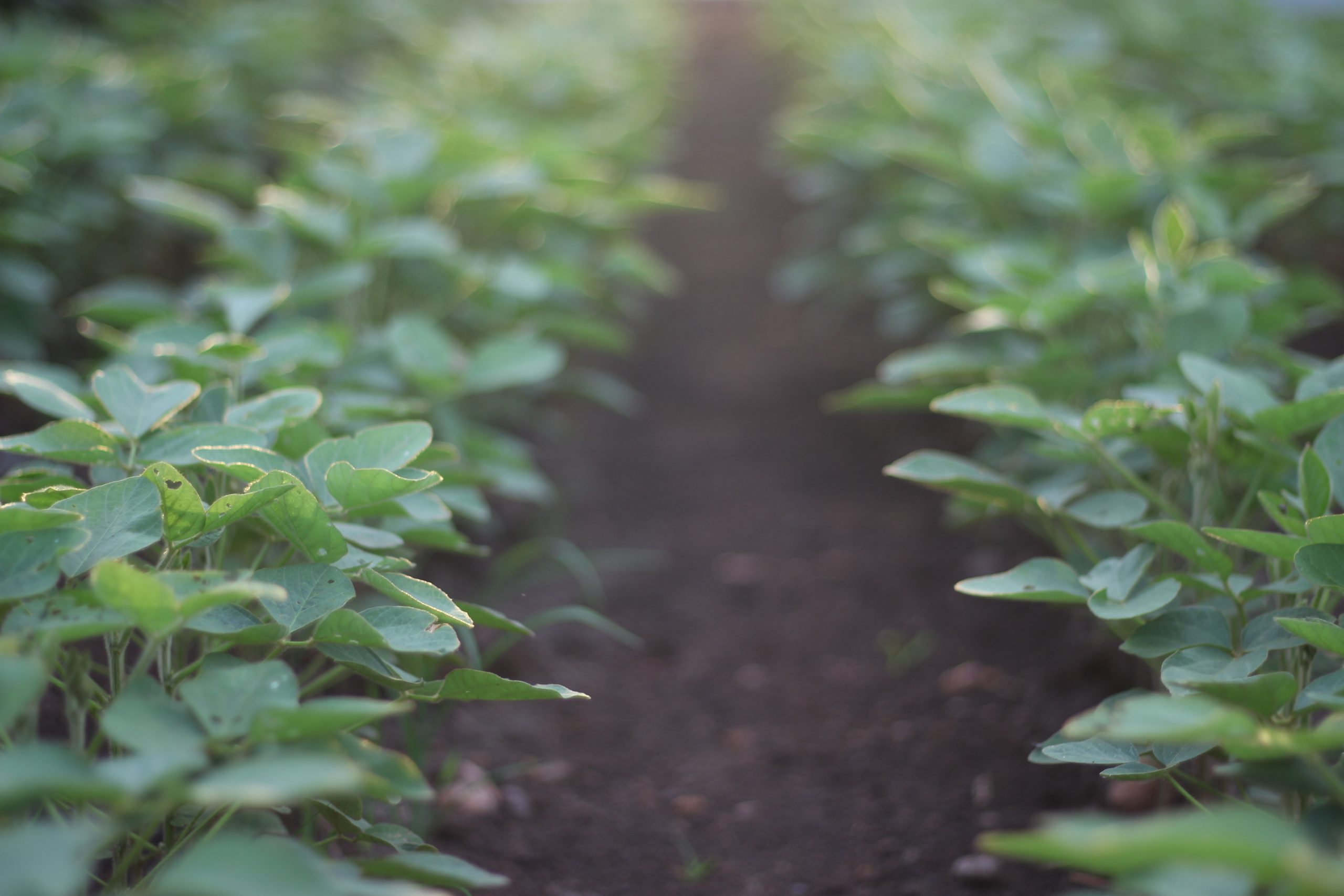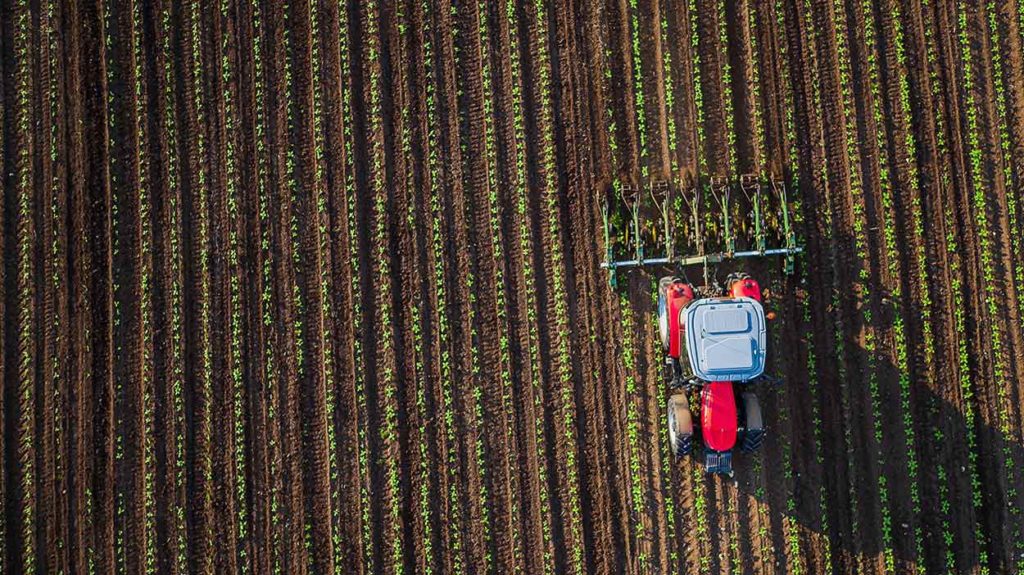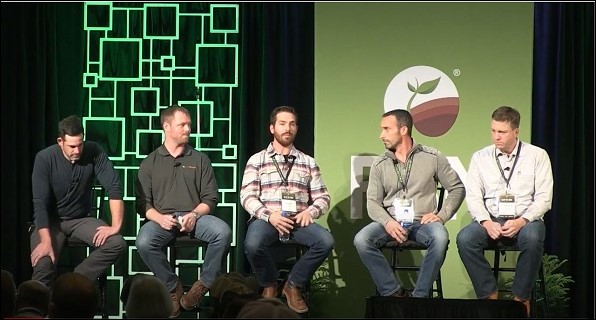- Published On: October 22, 2019
- Author: Steve Sinkula
You’ve heard the saying, “location, location, location.” The real estate mantra is used to remind people that where a property is located is often the most important factor in its value.
In organic farming, the same can be said about rotation. Having the right rotation in place is critical for year-to-year success and the long-term value of your organic operation.

Why Rotation is Key to Organic Success
Rotation is so important in organic production because, unlike conventional production, you cannot rely upon chemical crop inputs to deliver fertility or fight weeds, diseases and pests.
The foundation for your weed control comes from establishing a diverse rotation because different crops help control different weeds. For instance, if you have wheat and corn in your rotation, the weeds that typically go to seed in corn won’t have that opportunity with wheat, because you harvest wheat 3 months earlier. Thus, a diverse crop rotation (with a minimum of three different crops) sets the right tone for weed management.
Similarly, a good rotation will also reduce the risks of pests and diseases altering the cycle upon which diseases or pests can build their presence in a field.
Finally, a diverse crop rotation incorporating cover crops can also help enhance soil health. For example, different crops will also extract nutrients in differently from the soil, allowing Mother Nature to do what it’s intended to do, which is to build and balance nutrients and biology in the soil.
Designing the Right Rotation
Similar to building the right transition plan, deciding on the best rotation for your organic acres comes down to agronomics, economics, and management.
Rotation can provide timing advantages for your weed control and other fieldwork activities. If your plan is an organic corn and soybeans rotation, your planting, weed control and harvest activities will all happen at the same time, which is more challenging to do in organic because of the higher level of management required. However, if your organic rotation includes small grains and summer annuals, your workload will be spread out — effectively increasing your “acreage capacity” without adding more equipment or people.
While there’s no rule of thumb to the number of crops that should be in your long-term rotation, aiming for three different cash crops in 5 years will provide the diversity to help control weeds and reduce the risks of pest and disease. When including cover crops, many farmers will end up with 6-8 different crops in that time period.
You should also try to design an annual rotation where the workload for at least one third of your acres occur at a separate time from the other two-thirds to help with time management, such as a corn-peas-wheat rotation.
Focus on the 10-Year Return
The biggest mistake I see organic farmers make is spending too much money up front by basing purchasing decisions off of the organic corn economics, whether it was on equipment, transition, or renting more land. As a result, they are forced into growing only high-value crops (like corn) to make that money back as quickly as possible. Ultimately this will lead to failure more often than not.
You can’t always go for the biggest money every year. Instead, look at your 10-year return profile and consider what is going to work best in the long run. If you have to shoot for making the most money on every acre each year with a one-year view, it is usually not sustainable.
You should also consider your 10-year return profile when growing different crops. I’m often asked, “What else do we grow beside corn and soybeans in Iowa?” There is no one-size-fits-all answer right now. At AgriSecure we are always exploring different crop rotations and working to develop new markets for our clients. As an organic farmer, you will have to think outside the box and keep it simple. Think about what kind of rotations you can successfully grow, how it’s going to benefit you agronomically, and how it will fit in your 10-year return profile.
Get Guidance on Your Rotation
Rotation is too important a factor in organic farming to risk making the wrong decision. If you’re wondering what the best rotation is based on your location, workload, equipment and markets, AgriSecure can help.
Contact us to develop a rotation that sets your organic operation up for long-term success.
Related Articles
-
Imports Have an Impact on Organic Crop Prices: Here’s Why
Organic soybean prices are skyrocketing. The Jacobsen reported that prices were up to $32 per bushel in the Midwest in May 2021. What’s behind this impact on organic crop prices? And why aren’t organic corn premiums keeping up? In short: it’s all about supply and demand, especially imports, says David Becker. David is an analyst […]
-
New Options Offer Farm Loans for Organic Transition
If securing farm loans for organic transition feels daunting, we have some good news. It’s not as hard as it used to be. In fact, there’s a number of new options that could provide a solution for you and your operation. Traditional lenders, farmland investors, non-profits, and even big food companies are starting to create […]
-
Organic Farming Loans Support Growers during Transition
Ask a farmer what’s keeping them from transitioning to organic row crops, and you may be surprised to hear a common answer. Finances. It’s often a struggle to find organic farming loans tailored to their needs. Yes, organics offer excellent premiums and can bring long-term profitability. But first you have to get through the 36-month […]
-
Organic Breakevens: What to Know and How to Calculate
If you’re thinking about organics, you’ve probably debated whether it’s going to pay off — literally. Yes, the price premiums are good, but you’ve heard your yields will take a hit. How can you predict profitability? The answer: calculating your organic breakevens. What are an organic breakevens? Simply put, it’s a way to calculate what […]
-
Know Your Numbers to Push Crop Profitability
Yield is often the top priority in farming. The truth, though, is that the highest yields will not necessarily result in the highest ROI. And this is especially the case for organic production. We know good execution results in the best yields, but the best way to maximize your crop profitability is to know your […]
-
6 Ways to Protect Organic Profits in Uncertain Times
Economic uncertainty hits all sectors of the agriculture industry, including organics. The good news? It’s possible to safeguard your organic profits. For a start, it’s even more important for organic farmers to focus on executing their operations really well. The better the execution, the better you can weather the market conditions and remain profitable. Here […]
-
5 Steps for Financing the Transition to Organics
Profits. They’re one of the primary reasons farmers decide to move into organic production. Financing the transition to organics, though, can be one of your biggest hurdles. That’s why the support of a banker or ag lender can be a lifeline for farmers looking to get into organics. The right backing helps you build an […]
-
4 Keys to a Strong Organic Fertilizer Strategy
Questions about an organic fertilizer strategy are common in organic farming. How do I provide enough nutrients? In particular, nitrogen. How do I manage my crop and soil without using synthetic fertilizers? Fertilizer can come from a variety of organic sources, including animal waste, decomposing plants, and nitrogen-fixing crops like soybeans and clover. So it’s […]
-
Consider Organic Farming? Yes.
With so much economic uncertainty caused by the COVID-19 pandemic, you may be wondering: Is now the right time to transition into organic crop production? Is this the right time to increase the number of organic acres you’re already farming? My answer, yes. Current market conditions, falling commodity prices for conventional crops and somewhat lower […]
-
80 Million Millennials Can’t Be Wrong: Farmer Panel
80 million millennials are a part of the driving force behind the rapid growth of organic food demand. So why aren’t more farmers transitioning into a system that sees premiums of 2x over conventional and profitable margins? In a panel that took place at FBN’s Farmer2Farmer V event, AgriSecure co-founder and organic farmer Bryce Irlbeck […]
Get in the know
Our newsletter, it’s a quick read. You’ll get industry news plus all the latest organic insights. Who doesn’t want that?










